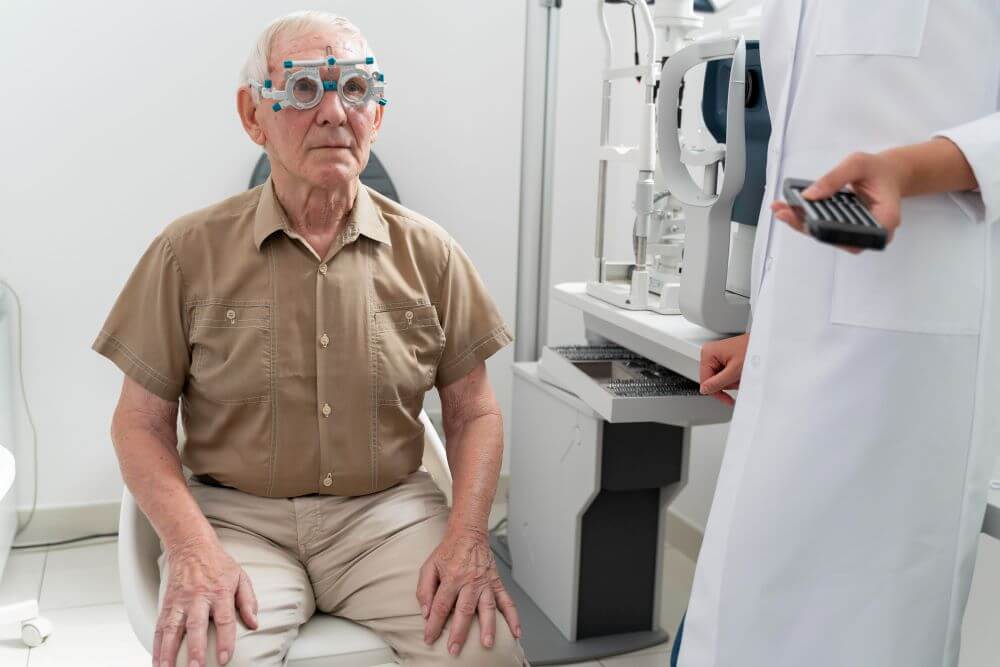It often starts small—a faint blur in the middle of your sight or a hazy patch that makes reading or focusing just a little harder. Many people brush it off as tired eyes or poor lighting, but over time, that cloudy spot doesn’t seem to go away. What was once crystal clear now looks like it’s being filtered through a soft mist. When this happens, it’s natural to worry: what’s going on with your eyes?
Changes in vision can be unsettling, especially when the world seems to lose its sharpness. Whether it’s noticing that lights have halos around them, or that colors don’t seem as vivid anymore, these small differences often signal that something deeper might be happening inside the eye. And while not all cloudy vision points to something serious, understanding the cause is the first step to taking care of it.
In many cases, that cloudy spot may have a name—and it’s more common than most realize. Understanding why it appears, what it means, and how modern eye care, such as cataract treatment in Singapore, can restore clarity, helps turn fear into informed action.
Common Cause: The Formation of Cataracts
Cloudy vision is often linked to cataracts, a condition that gradually creates a fog-like film over the eye’s natural lens. For many adults, especially those over 50, cataracts develop so slowly that they hardly notice until daily tasks start to feel a bit off. Reading menus, seeing street signs at night, or recognizing faces in bright sunlight can all become small daily frustrations.
How Cataracts Develop
Inside each eye sits a clear lens that helps focus light onto the retina, allowing sharp and vibrant images to form. Over time, this lens can change. The proteins inside begin to clump together, making parts of the lens less transparent. This buildup scatters light instead of letting it pass cleanly through, leading to vision that feels blurry or fogged over. It’s not sudden or painful—just a gradual settling of haze between you and the world.
Recognizing the Early Signs
The earliest signs of cataracts often hide in plain sight. Glare from headlights or screens may seem harsher than before. Dim environments might feel unusually dark, even with good lighting. Sometimes, a person notices colors losing their former brightness, appearing dull or yellow-tinted. These subtle shifts can easily be dismissed, but over time, they become harder to ignore. Catching these signs early makes a difference, as timely care can help prevent further deterioration.
When It Starts to Affect Daily Life
Eventually, what begins as a mild inconvenience can affect everything from reading and driving to enjoying a sunset. Beyond the physical impact, there’s an emotional one too. Vision defines so much of daily independence and confidence. When it begins to fade, it can feel limiting. Thankfully, with today’s medical advancements, cataracts can be treated safely and effectively, often restoring near-perfect clarity.
Other Reasons for Cloudy Spots in Vision
Not every cloudy spot means a cataract. There are other possible explanations, ranging from dry eyes to more complex retinal issues. Understanding these helps avoid unnecessary worry and encourages quick medical guidance when needed.
Dry Eyes and Surface Problems
Sometimes the cause is as simple as dryness. The surface of the eye depends on a thin tear film to keep vision smooth. When that film breaks up—due to age, long hours of screen use, or certain medications—vision can temporarily blur or look cloudy. This type of blurriness often clears with blinking or using lubricating eye drops. While mild, persistent dryness deserves attention too, since chronic irritation can affect comfort and long-term clarity.
Corneal or Retinal Changes
If cloudiness seems fixed in one area or paired with light flashes or floating spots, it might point to something deeper than the lens. Conditions affecting the cornea, such as infections or scars, can distort light and cause spots that move or stay visible even when blinking. Similarly, problems with the retina—the light-sensitive layer at the back of the eye—can sometimes produce shadowy or cloudy areas in vision. These symptoms should always prompt a visit to an eye specialist, as early detection often prevents more serious outcomes.
Taking the Next Step Toward Clearer Vision
No one should ignore a cloudy spot that doesn’t go away. The eyes are delicate, and even subtle changes can reveal a lot about overall health. A comprehensive eye examination provides clarity—not just about what’s happening, but also about what can be done. Diagnosis often starts with simple vision tests and a look inside the eye using safe, noninvasive tools that reveal any irregularities in the lens, cornea, or retina.
If cataracts are identified, modern cataract treatment offers advanced solutions designed for precision, comfort, and quick recovery. With techniques like laser-assisted surgery and customizable lens implants, many patients regain sharp, bright vision, often better than before. The procedure is typically painless and performed on an outpatient basis, making it a straightforward step toward renewed clarity.
Vision problems can be intimidating, but they don’t have to define daily life. Whether the issue turns out to be dryness, lens aging, or something else entirely, knowledge and timely care make all the difference. Seeing an eye specialist early not only preserves sight—it brings back the confidence and freedom that come from seeing the world clearly again.
















